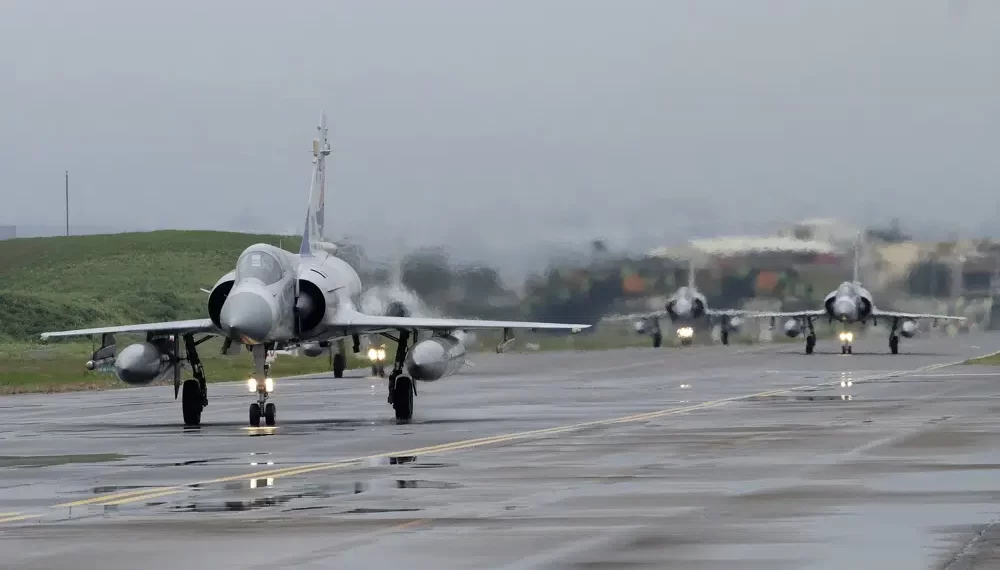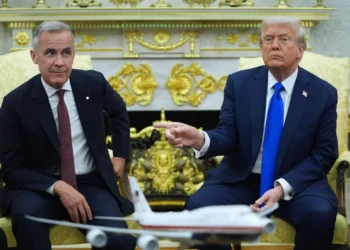In an era defined by climate crises, economic uncertainty and wars, the world has made a choice to spend more on weapons than ever before.
According to a new report from the Stockholm International Peace Research Institute (SIPRI), the world’s military spending is at the highest rate in nearly four decades.
The 9.4% year-on-year rise to $2.718 trillion in global military spending in 2024 is the highest figure ever recorded by the authoritative Stockholm International Peace Research Institute (SIPRI) in its annual report.
That is the highest rise since 1988, the year before the Berlin Wall fell.
The report pointed out that there’s no end in sight to the spiraling global arms race. “Many countries have also committed to raising military spending, which will lead to further global increases in the coming years,” the report said.
The report disclosed that United States remains by far the world’s biggest military spender – almost a trillion dollars in 2024.
Big ticket items in the US budget included F-35 stealth fighters and their combat systems ($61.1 billion), new ships for the US Navy ($48.1 billion), modernizing the US nuclear arsenal ($37.7 billion) and missile defense ($29.8 billion).
The US budget included $48.4 billion in aid for Ukraine, almost three-quarters of Kyiv’s own defense budget of $64.8 billion.
The report noted that China followed the US in overall military spending with an estimated $314 billion, just under a third of the US total.
It noted that China “unveiled several improved capabilities in 2024, including new stealth combat aircraft, uncrewed aerial vehicles (UAVs) and uncrewed underwater vehicles.”
It added that China also continued to rapidly expand its nuclear arsenal in 2024.
Together, Washington and Beijing accounted for almost half of the world’s military spending in 2024, the report said.
However, countries involved in – or wary of – regional conflicts showed the biggest increases in spending year over year.
Israel, which launched an invasion of the Palestinian territory of Gaza in 2023, showed a whopping 65% increase in military spending in 2024.
Meanwhile, Russia, which invaded Ukraine in 2022, showed an estimated increase of at least 38%, but the SIPRI noted that figure was likely higher as Moscow augments military coffers with money from regional and other sources.
Germany, with the world’s fourth-largest defense budget, upped its spending by 28%. Romania (43%), the Netherlands (35%), Sweden (34%), the Czech Republic (32%), Poland (31%), Denmark (20%), Norway (17%), Finland (16%), Turkey (12%) and Greece (11%), were the other NATO members among the top 40 defense spenders worldwide who showed double-digit increases in 2024.
Jade Guiberteau Ricard, researcher with the SIPRI Military Expenditure and Arms Production Programme, stated, “The rapid spending increases among European NATO members were driven mainly by the ongoing Russian threat and concerns about possible US disengagement within the alliance.”
However, analysts said that it may take more than money for US allies in Europe to become militarily self-sufficient.
China Marks 30th Consecutive Year-Over-Year Rise In Military Spending
In the Indo-Pacific, the SIPRI said that China’s 7% increase in 2024 marked the 30th consecutive year-over-year rise in spending for the People’s Liberation Army, “the largest unbroken streak recorded” in the institute’s database. “China’s military build-up has also influenced the military policies of its neighbors, prompting many of them to increase spending,” it said.
Japan’s military budget rose 21% in 2024 – Tokyo’s largest increase since 1952. That brought military spending to 1.4% of gross domestic product, the biggest chunk of Japan’s economy devoted to the military since 1958.
The Philippines, embroiled with China in territorial disputes in the South China Sea, increased its defense spending 19%.
India, meanwhile, had the world’s fifth-largest defense budget ($86.1 billion) in 2024.
New Delhi’s increase over 2023 was only 1.6%, but the country’s defense spending is up 42% over the past decade, indicative of a troubling trend, researchers said.
Nan Tian, Director of the SIPRI Military Expenditure and Arms Production Programme, said that major military spenders in the Asia–Pacific region are investing increasing resources into advanced military capabilities. Nan added, “With several unresolved disputes and mounting tensions, these investments risk sending the region into a dangerous arms-race spiral.”
READ ALSO: PIAC Flags GNPC for Withholding $145.7M from Petroleum Fund



















